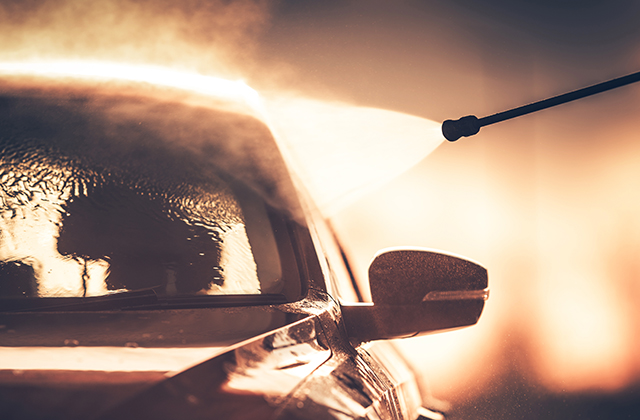Maintaining the pristine appearance of a car is a source of pride for many vehicle owners. A gleaming, spotless exterior not only enhances a car’s aesthetic appeal but also contributes to its longevity by protecting the paint and finish from environmental elements. Behind this seemingly simple task lies a fascinating world of chemistry that powers the effectiveness of car washing. In this article, we delve into the science behind the sparkle, exploring how the right car washing kit and the chemistry of cleaning agents work together to achieve that spotless finish.
Breaking Down the Grime: Surfactants and Emulsification
The journey towards a clean car begins with the removal of dirt, dust, and grime accumulated on the surface. This is where surfactants come into play. Surfactants, short for surface-active agents, possess unique properties that enable them to interact with both water and oil. These molecules have a hydrophilic (water-attracting) “head” and a hydrophobic (water-repellent) “tail,” allowing them to surround and lift away oily or greasy substances from the car’s surface.
In your trusty car washing kit, you’ll find a range of products that contain surfactants. These could include car shampoos, foaming agents, and detailing sprays. When these products are mixed with water and applied to your vehicle’s exterior, the surfactants work to break down and encapsulate the dirt. As you rinse the car, the encapsulated particles are carried away, leaving a cleaner surface behind.
The Battle Against Stubborn Stains: Solvents and Degreasers
Sometimes, more stubborn stains such as tree sap, bird droppings, or road tar require a bit of extra firepower. This is where solvents and degreasers step in. Solvents are chemicals that can dissolve other substances, and degreasers are specialized solvents formulated to break down grease and oil.
In your car washing kit, you might find products labeled as bug and tar removers or adhesive solvents. These products contain solvents that target the compounds responsible for stubborn stains. By breaking down the chemical bonds holding these substances to the car’s surface, solvents make it easier to wipe away the unwanted marks without damaging the paint.
The pH Puzzle: Acidic and Alkaline Cleaners
Understanding the pH scale is crucial when selecting cleaning agents for your car. The pH scale measures the acidity or alkalinity of a substance. In the world of car washing, both acidic and alkaline cleaners have their roles to play.
Acidic cleaners are designed to dissolve mineral deposits, water spots, and oxidation. These products are particularly useful for restoring the shine to chrome, aluminum, and glass surfaces. On the other hand, alkaline cleaners are effective against organic materials like bugs, mud, and grease. However, it’s essential to strike a balance. Overusing either acidic or alkaline cleaners can potentially damage the car’s paint and finish.
Protecting the Shine: Wax and Sealants
After cleaning the car’s exterior, it’s crucial to protect the newly cleaned surface. This is where wax and sealants come into the picture. Wax creates a physical barrier between the car’s paint and environmental elements. It fills in tiny imperfections and creates a smooth surface that enhances the car’s shine.
Sealants, often formulated with synthetic polymers, provide longer-lasting protection compared to traditional waxes. These polymers bond tightly to the paint, forming a durable shield against UV rays, water, and contaminants. The result is a glossy finish that not only looks great but also repels dirt and grime, making future cleaning easier.
In Conclusion
Car washing is far more than just a chore; it’s a harmonious dance of chemistry and care. The next time you reach for your car washing kit, take a moment to appreciate the scientific marvel that enables you to transform a dull, dirty surface into a dazzling display of cleanliness. The surfactants, solvents, cleaners, and protectants in your kit all work in tandem, each with its unique role, to ensure your vehicle stays not only visually appealing but also protected against the tests of time and the environment. Check the best tool to use for car washing.
